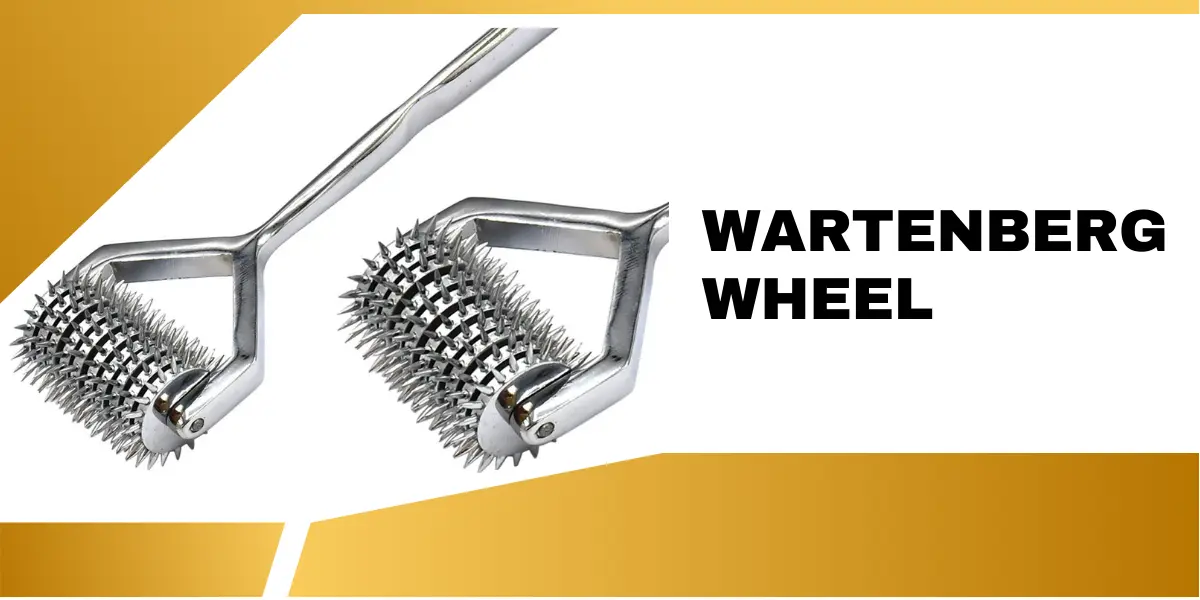The Wartenberg wheel, also known as a Wartenberg pinwheel, is a unique medical instrument with a fascinating history and a variety of uses. Originally designed by neurologist Dr. Robert Wartenberg in the early 20th century, this tool has since found applications beyond its initial purpose. Its primary function was to test nerve sensitivity, but it has since become a versatile instrument used in various fields.
Historical Background of the Wartenberg Wheel
The Wartenberg wheel was invented to address the need for a reliable instrument to assess nerve response and sensitivity. Dr. Robert Wartenberg, a German-American neurologist, created this wheel to aid in the diagnosis of nerve damage and dysfunction. Its design, featuring a rotating wheel with evenly spaced, sharp points, allows for a consistent and controlled way to stimulate nerve endings.
Medical Applications of the Wartenberg Wheel
Neurological Examinations
In medical settings, the wheel is primarily used for neurological examinations. Doctors use it to assess nerve damage and functionality by rolling the wheel across the skin and testing the patient’s ability to feel the sensation. This is particularly useful in diagnosing conditions such as neuropathy and other nerve disorders.
Physical Therapy and Rehabilitation
Physical therapists also employ the Wartenberg wheel in rehabilitation and physical therapy. It helps in retraining nerve pathways and enhancing sensory perception in patients recovering from injuries or surgeries. The controlled stimulation provided by the wheel can aid in the recovery of sensory function.
Alternative Uses of the Wartenberg Wheel
Acupuncture and Reflexology
Beyond traditional medical applications, the Wartenberg wheel has found a place in acupuncture and reflexology. Practitioners use it to stimulate pressure points, promoting healing and relaxation. The precise stimulation offered by the wheel can enhance the effectiveness of these alternative therapies.
Sensory Play and Therapeutic Touch
In recent years, the Wartenberg wheel has gained popularity in the realm of sensory play and therapeutic touch. It is used to explore different tactile sensations and can be part of therapeutic practices aimed at improving sensory processing and emotional regulation.
How to Use a Wartenberg Wheel Safely
Preparation and Precautions
Before using a Wartenberg wheel, it is crucial to ensure the skin is clean and dry. This prevents infections and ensures the wheel rolls smoothly. The wheel should be disinfected before and after each use to maintain hygiene.
Proper Technique
To use the Wartenberg wheel effectively, gently roll it across the skin, applying light pressure. Avoid pressing too hard to prevent discomfort or injury. It is important to communicate with the person receiving the stimulation to ensure they are comfortable and not experiencing pain.
Choosing the Right Wartenberg Wheel
Material and Design
Wartenberg wheels come in various materials, including stainless steel and plastic. Stainless steel wheels are more durable and provide a consistent sensory experience. The design can vary, with some wheels having longer or shorter spikes, depending on the intended use.
Single vs. Multiple Wheels
Some Wartenberg wheels feature a single wheel, while others have multiple wheels for broader coverage. Single wheels offer more precision, while multiple wheels can stimulate larger areas more quickly. The choice between the two depends on the specific needs of the user.
Maintaining and Cleaning Your Wartenberg Wheel
Regular Cleaning
Regular cleaning is essential to maintain the functionality and hygiene of the Wartenberg. Use a disinfectant solution to clean the wheel after each use. This prevents the spread of bacteria and ensures the wheel remains in good condition.
Storage
Store the Wartenberg wheel in a dry, clean place. Keeping it in a protective case can prevent damage and ensure it remains free from dust and contaminants. Proper storage extends the life of the instrument and keeps it ready for use.
Conclusion
The Wartenberg wheel is a versatile and valuable tool in both medical and alternative therapy settings. Its ability to provide precise and controlled stimulation makes it indispensable in neurological examinations, physical therapy, acupuncture, and sensory play. By understanding its history, applications, and proper use, we can fully appreciate the benefits of this remarkable instrument.
Read our more Blogs…
